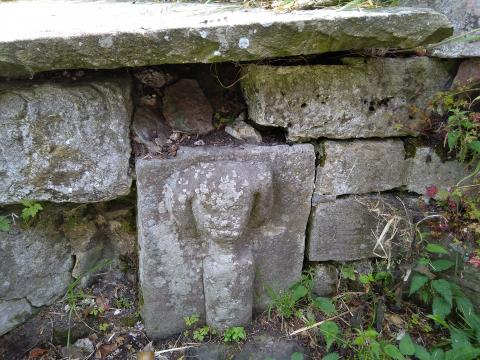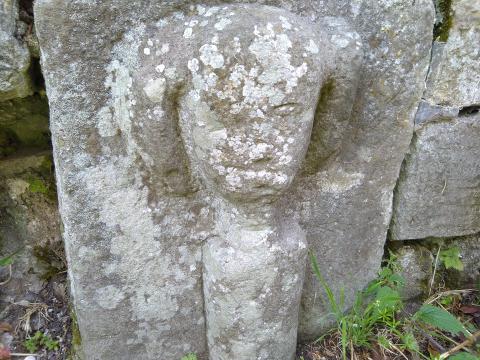Horned Cernunnos

Built into the back cemetery wall at Rostherne in Cheshire is a strange, carved head. At first I thought it medieval, but it is clearly more ancient, being about two millennia old. It was found in the nearby mere and is probably the Celtic god Cernunnos, after whom the local Celtic tribe, the Cornovii were named. The long features either side of the head are likely horns, supporting the Cernunnos theory. Interestingly, Baal, the bogeyman of Old Testament Israel, is often portrayed as a horned deity, perhaps inspiring the association of horns with Satan himself.
If Cernunnos it be, he is in a poor state. Though dredged from the lake, his worshippers are all gone, his image little more than a curiosity. Though Revelation 13 speaks of
…a second beast, coming out of the earth. It had two horns like a lamb, but it spoke like a dragon,
-all the wicked horns, past and future, await the same judgment. In Psalm 75, God promises:
I will cut off the horns of all the wicked, but the horns of the righteous will be lifted up. (v10)
I was once within the vicinity of a wild, Black Rhinoceros in Kenya. He was a big lad and was irritated by our diesel vehicle. He began to paw the ground with his great foot as though preparing a charge. Our driver knew what to do, and we sped off before he made up his mind. Yet I was conscious of that horn and where it might be stuck. The horns of the wicked, that symbol of their strength and power, oft appear threatening and menacing, sure to damage and destroy all that is good. If Satan shall appear in the last days, behorned and furious, be assured the great Horn Cutter is imminent also. Cernunnos is no more, just a relic in a church yard, a dim and distant memory. So with all the horns of the wicked.

- Log in to post comments


 Sunday Worship 10.45am & 6.00pm
Sunday Worship 10.45am & 6.00pm